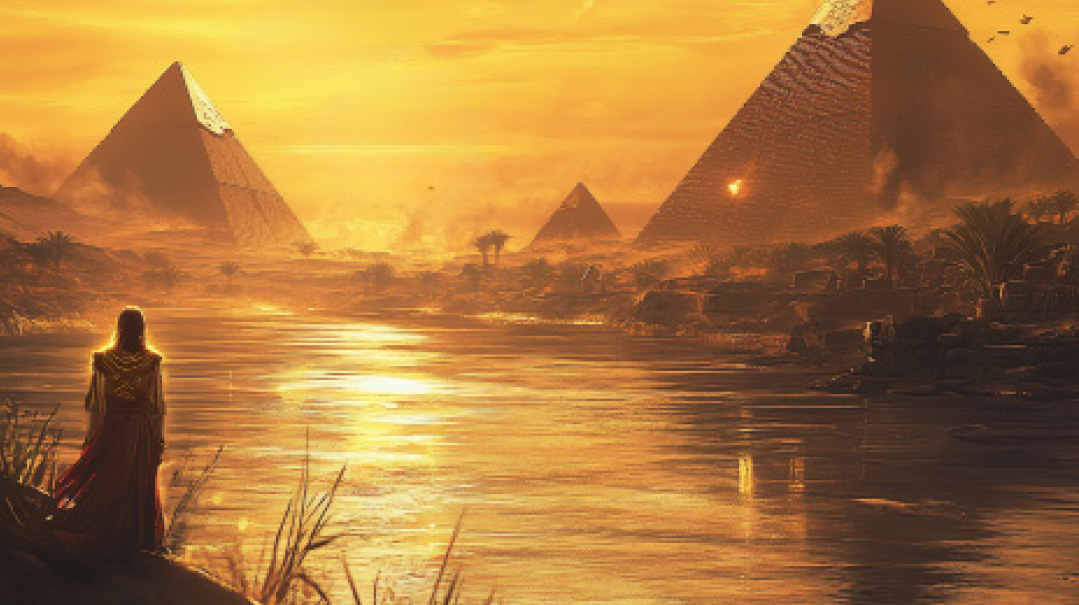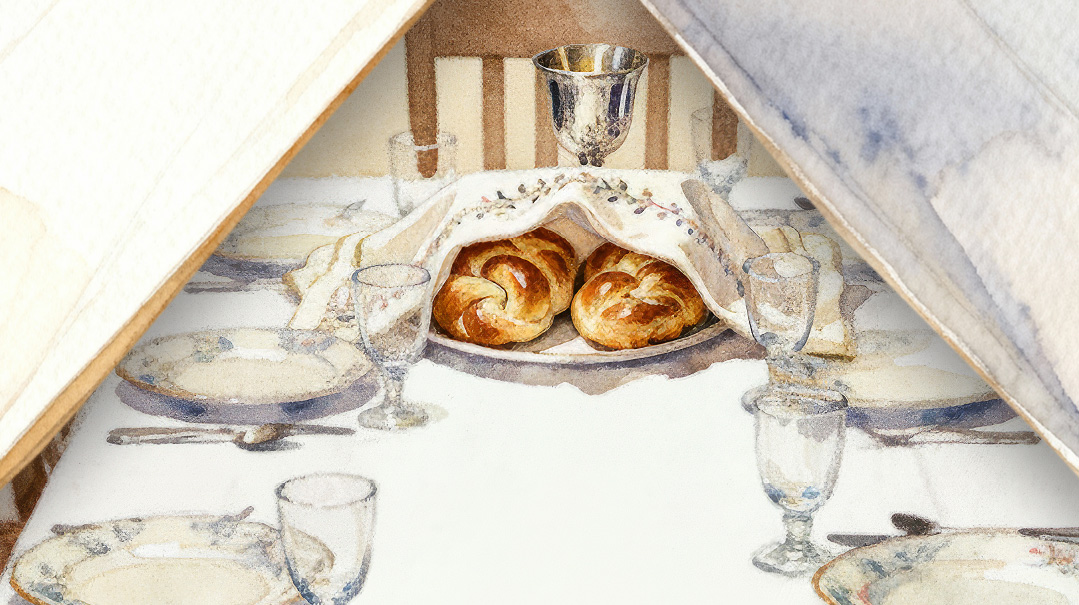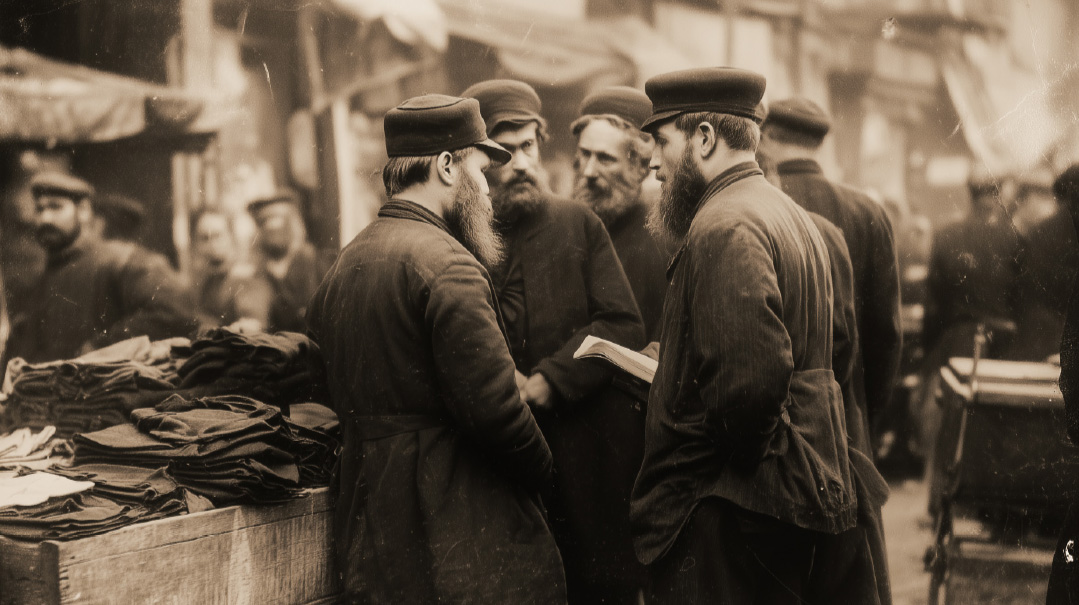To Save the World
| March 25, 2025The Last Slave is a story of redemption — and so was the process that got us to the finish line

I dreamed of inspiring the world with a novel about the Exodus from Egypt, and I came up with a perfect plot I could churn out in three months. But my husband saw so much more potential in the book than I could imagine.
If it could be meticulously sourced in Torah, it would bring the book to a whole new level. That was the start of a writing and editing collaboration that took much longer than either of us thought. The final product, The Last Slave, is a story of redemption — and so was the process that got us to the finish line
I
harbored dreams of changing the world and inspiring people around the globe with my words — something extremely difficult to achieve when no one reads your work. I had been writing for many years with little success. Languishing inside my computer were children’s series, novels, original musicals, songs, and article after article, doomed never to see the light of day.
Then, through amazing Hashgachah pratis — and for reasons completely unrelated to my dream — my husband ended up opening his own publishing company, Adir Press. I was immensely grateful that my work would find a willing audience.
The first book I published was an illustrated children’s book, Chanukah Back in Time. This was followed by Bullied, a high school novel about bullying, loss, and overcoming fear. Now it was time to write another book. I knew there were writers out there who churned out books every three months, and I was determined to be one of them. I would write an incredible, life-changing book in three months. I knew I could do it. All I needed was a story. I started racking my brain to come up with an idea.
Then it came to me. I had written a Pesach musical several years ago. It was then almost Succos; if I worked hard, I could turn my musical into a book and have it ready for Pesach.
During Succos I thought about the plot. I felt it was important to show the slavery from the beginning — how the Jews became enslaved, the Egyptian mindset, Pharaoh, Bilaam, the royal decrees, the midwives, and the rise of hatred among the Egyptians. The action would need to play out over an 80-year period. And the story would have to be told from two perspectives that would somehow tie together: Egyptian and Hebrew.
But who would be the Egyptian voice? It would have to be someone with eyes in the palace, who sympathized with the Hebrews. Basya was the perfect choice. What could be more incredible than having the princess of Egypt as my main character?
I enthusiastically told my husband my great idea, and he quickly nixed it. How could we faithfully represent the voice and mind of a tzadeikes so great that the Midrash tells us she merited to enter Gan Eden without dying?
He had a point. But I needed this character to be in the palace. Who else could it be? I scoured Shemos, searching for inspiration. And then I found her.
The Gemara cites two opinions about who retrieved Moshe’s basket from the Nile. The more famous opinion is that Basya’s arm miraculously stretched across the river. The other, which Rashi appears to favor as pshat, is that Basya’s maidservant retrieved the basket. As befitting a lady of such stature, the daughter of Pharaoh was never left alone. She had a companion continually by her side. I now had my main character — Tia, the Egyptian lady-in-waiting — and I built the rest of the story from there.
I
set to work. I needed to move quickly to meet my three-month target. The first week I outlined my plot, the second week I had all my characters, and the next few months I wrote like a woman possessed. Throughout it all, I learned about Yetzias Mitzrayim and researched as much as I could about ancient Egypt.
Three months later, I was done. I excitedly handed over my manuscript to my husband, who is not only the publisher, and the writer of all the Torah sources for this book, but also the most incredible editor I know.
And he set about tearing my novel to shreds.
Every character needed developing. The main character had so many conflicting thoughts that she appeared to have a personality disorder. My story seemed to be a chaotic mix of all the Midrashim I’d ever heard, mixed with my own insights and all the recently discovered knowledge I had acquired. Basically, I had made things up left, right, and center.
Furthermore, by plunging headfirst into the story, and just assuming that all the Midrashim would fit into it, I had come up with a timeline that was jarringly out of sync with the sources. Many scenes would need drastic overhauls or would have to be cut out completely. To write the book truthfully and accurately, I would need to build the story around the sources, and not the other way around. Everything that I’d written needed to be checked from a Torah perspective, verified as reliable, and then written into the story in a correct and appropriate way.
This would take my husband months to research.
“So it won’t be ready by Pesach?” I asked, not quite ready to give up my three-month plan.
My husband looked at me like I’d fallen off the moon.
“No, my dear,” he said kindly. “It won’t be ready for this Pesach. There’s a drop more work to do. Maybe next year.”
But it wasn’t ready the next year. Nor the next, or the next after that. There was so much to do. So many rounds of edits. So many Midrashim and mefarshim that needed checking and rechecking. So many scenes that needed rewriting to align with those sources.
When I started writing, I had no idea that the sources would be so meticulously researched and written up in such extensive detail. I had no idea that every single sentence would be scrutinized to see if it needed a footnote. I had no idea how many times my husband and I would say the word footnote!
Considering my aspirations to write a quick book, I cannot say I initially welcomed this format with open arms. But my husband is not only the editor and publisher of this book, he is also a talmid chacham and the author of his own Short Vort book series. No matter how many times I told him that this is not what was needed in a novel (did I mention I wanted to write a quick book?), it was to no avail. Every inch of the story would be checked thoroughly and then written up in meticulous detail, essentially becoming mini short vorts — almost a hundred pages of them.
And so, my book became our book. We worked on everything together. My husband edited my work, and I edited his. As soon as I read his sources, I understood that he was absolutely right. They added so much depth to the book. They were so interesting. I was always learning something new. It was almost like a Haggadah commentary.
O
ne issue that was extremely difficult to work through was idolatry. The Midrash tells us that the primary factor preventing the Jewish People’s redemption from Egypt was their attachment to idol worship. How could I show Tia’s struggle with idolatry when I couldn’t wrap my own head around it? How could I write believable characters if I couldn’t understand why they were compelled to worship false gods? I couldn’t draw a true picture of our slavery in Egypt without including idol worship— but if I couldn’t understand idol worship, my audience wouldn’t be able to understand it either.
I struggled with this for five years, until I heard a shiur by the well-known anti-missionary, Rabbi Tuvia Singer. Someone asked him: If Christianity is so obviously false, why do so many people believe it? His answer shaped the way I weaved Tia’s feelings toward idol worship into the story.
“Because they love him,” said Rabbi Singer. “They believe with all their hearts that he is their savior and their love for him overrides all logic. Nothing else matters but their love for him.”
This was the key for me. I couldn’t understand or accurately write from the perspective of many gods, but one false god that a person believed in and loved with all her heart — that I could do.
IT
took five years of writing and rewriting before The Last Slave was ready to be published — and honestly, we only just made it. When the book was released, I was incredibly nervous about how it would be received. My husband was more confident, though. He believed in my writing, and he felt sure that everything was backed up by scrupulously researched sources.
But I really worried that people would be, quite frankly, horrified. I had magic spells! I had a wicked magician making figurines and putting curses on the heroine. Even though we brought Midrashim and Gemaras for everything, it’s not exactly what most frum people write about.
Baruch Hashem, the response has exceeded my expectations. Since its publication, and subsequent reprints, I have received so many phone calls and emails about how The Last Slave has transformed their Seder night and their entire view of Yetzias Mitzrayim. One rosh yeshivah even emailed my husband to say that he started teaching the book in his emunah classes.
We decided to place a warning on the cover stating that the novel is intended for a mature audience, and indeed, some people have told me that the book is too graphic. I understand their sentiments — in my quest to help people feel the geulah, we had to portray the true difficulty of galus.
I knew the slavery wouldn’t be pleasant, but I initially assumed that we’d soon get past that to the miracles and Hashem would redeem us and all would be forgotten. But my eagle-eyed editor wasn’t going for any candy-floss version of slavery or the Ten Plagues. There would be no exciting rescue missions on the trunks of elephants for him (yet another cut scene).
Writing this book has been such a tremendous zechus, and I’m so grateful, but the truth is, the person who has gained the most from it is probably me.
Many times I’ve heard authors say, “If my book inspires just one person, it will have been worth writing it.” And every time I’ve heard that, I think to myself, Yeah, right. Who wants to inspire just one person? I want to inspire the whole world.
But as I was writing this book — especially the second half, where the slavery really intensifies — I finally realized what all those other writers meant. To change one person is to change the world — because every person is a world. And even before the book was printed, I realized that whatever came of it, even if it weren’t accepted and nobody liked it, it was still worth writing, just for me. I now feel an even deeper connection with the pain of exile and the intense yearning for redemption, and I have grown and continue to grow in my own emunah because of this heightened insight.
In fact, by the time I finished The Last Slave, I truly felt that as much as I wanted to inspire people with the talents that Hashem has given me, whether or not I see success in this world is completely and utterly in Hashem’s hands. I do my part, and the results are always up to Him, and only to Him.
AS
to what comes next — I’m actually still in Egypt. The book I’m currently working on is a spin-off of The Last Slave. Set in the same time and place, and with some familiar characters, we will, b’ezras Hashem, experience things from a whole new perspective. I have no idea when it will be ready. I have long learned not to rush the process.
I am so grateful and humbled to have been able to show this deeper insight into Yetzias Mitzrayim. Because we all know the story. We know they forced us to work until we were short of breath. We know they shamed us and beat us and separated us from our families. But who ever imagined what it actually felt like to have their baby torn from their arms and thrown into the river? Who ever imagined what it felt like to be a slave, whipped, tormented, and persecuted?
And we are here again. We say it every year on Seder night: “In every generation they rise up to destroy us. And Hashem saves us from their hands.”
We are experiencing the unspeakable horrors of exile. The world has risen up against us. Their hate has been ignited. We are living in frightening times.
But they are also miraculous times. Hopeful times. When we connect our pain to the pain of the past, it helps us make it through and hold on to our emunah. Because redemption is coming. Hashem is going to redeem us. He’s going to take us out of this. We just need to believe it. Want it. And never stop yearning for it.
(Originally featured in Mishpacha, Issue 1055)
Oops! We could not locate your form.







